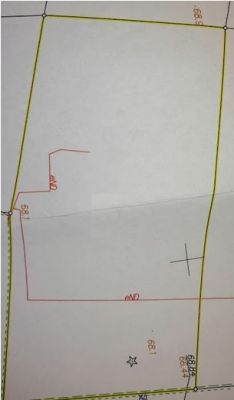Hello,
On the main map, a cable line marked with eND runs through the plot. This line runs through several plots. Below is a map section. What does eND mean? Is it "digitization", ie a transfer from some old map? I asked the operator responsible for this region, who responded with a letter that he did not own the cable line.

The general opinion of the inhabitants is that it is an old cable laid during the previous political system, long out of use. Supposedly, blocks were to be erected at this point, but the work was abandoned at an early stage, i.e. some 30 or 40 years ago.
The question is whether in this case the line can be considered decommissioned and removed from the plot presented? I did not remove the cable, I did not check if it really exists and if it is live. I also don't have a device to check it from the surface of the earth.
I would like to add that the plot is in the Local Development Plan, which allows for single-family housing. The building line is 5m "from the bottom" of the picture. Plot length 50m.
On the main map, a cable line marked with eND runs through the plot. This line runs through several plots. Below is a map section. What does eND mean? Is it "digitization", ie a transfer from some old map? I asked the operator responsible for this region, who responded with a letter that he did not own the cable line.

The general opinion of the inhabitants is that it is an old cable laid during the previous political system, long out of use. Supposedly, blocks were to be erected at this point, but the work was abandoned at an early stage, i.e. some 30 or 40 years ago.
The question is whether in this case the line can be considered decommissioned and removed from the plot presented? I did not remove the cable, I did not check if it really exists and if it is live. I also don't have a device to check it from the surface of the earth.
I would like to add that the plot is in the Local Development Plan, which allows for single-family housing. The building line is 5m "from the bottom" of the picture. Plot length 50m.


